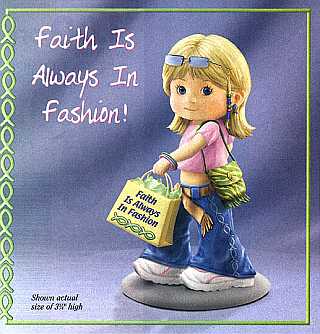 This last weekend, my wife and I did something we haven’t done in almost three years…
This last weekend, my wife and I did something we haven’t done in almost three years…
We spent a day shopping.
Unlike some Americans, we shop only if forced. As we try to simplify our lives by purchasing fewer and fewer things, shopping dwindles into the background along with other things we’ve relegated to the backburner of life (like TV viewing, going to the movies, and taking vacations every year).
One of the truths the Lord’s been teaching me concerns the embarrassment of riches we have in the United States. I got a larger lesson in this when I walked into a store I haven’t visited in more than two years: Best Buy.
My wife practices her singing on the way to work, but her car’s stereo burned out so she can’t practice along with her CDs. I came to see what I could find in a new stereo under $150. I also noted here a few weeks ago that our TV burned out. While we may watch next to no broadcast television, we do, on rare occasions, get a DVD out of our local library and take an evening off. So I wandered into Best Buy to get a feel for what’s out there in both offerings.
Whoa. The price tags! Am I reading it right that a TV capable of rendering a fully digital signal—as mandated by the FCC as of this month—costs a minimum of $1,500?
Sometime in the distant past of my shoddy memory, $1500 used to be what a car cost. In other words, one heck of a lot of money. Yet on this eighty degree, sunny day, Best Buy filled with people waving cash, their eyes wider than the width of the TVs that grabbed their attention.
What grabbed my attention was those folks’ shoes. You can tell everything you want to know about someone’s income by their shoes. Well-off people may wear grubby clothes, but rarely do they wear grubby, no-name-brand shoes. (When I worked in sales years ago, I picked my customers based on their shoes and routinely chalked up monster sales figures as a result) .
The shoes on the humungo TV-buyers said this: “We can’t afford this TV.” The kids wore knock-offs, swooshes that mimicked Nike, stripes not exactly Adidas. And so did their parents.
Thrifty, perhaps. But a quick scan of the newspapers tells a different story. We’ve got record personal bankruptcies, record mortgage defaulting, a huge spike in credit card debt (after years of downward numbers), negative savings rates, too much leverage on our houses through home equity loans, and a rise in every negative economic indicator known to Man.
Yet we keep on buying. We have to.
Hear David’s heart cry:
Look to the right and see: there is none who takes notice of me; no refuge remains to me; no one cares for my soul. I cry to you, O LORD; I say, “You are my refuge, my portion in the land of the living.”
—Psalm 142:4-5
Standing there in Best Buy, watching people cart out thousands of dollars worth of items that a house fire would reduce in heartbeats to so much melted glass and oozing plastic, I understood.
Best Buy takes notice of them. Samsung cares for their souls. Sony is their portion, Panasonic their refuge. Be it Best Buy, Home Depot, DSW, Bass Pro Shops, or whatever— that big box store’s got an altar to perfectly fit that hole where God should be enthroned.
At some point in the history of the United States, Jesus Christ failed to satisfy. You and I know this had nothing to do with the splendor of the Lord. He’s the same yesterday, today, and forever. But something changed in us.
I’ve been writing about the Holy Spirit quite a bit lately, and I think the American Church’s understanding of Him may explain our Big Box Altars.
I believe that we made the Lord a mental exercise. The Enlightenment inflicted a dire wound on our grasp of the Faith. We turned the Faith that enlivens us into something we cognitively assent to. Yet in doing so, we stripped the passion, the intense feelings of intimacy, that accompany faith in Christ. Our churches transformed into dim depositories of hazy reflections of what it means to be aflame with love for Jesus.
As a result, verses like the following don’t register with us:
I was glad when they said to me, “Let us go to the house of the LORD!”
—Psalms 122:1
I am a rose of Sharon, a lily of the valleys. As a lily among brambles, so is my love among the young women. As an apple tree among the trees of the forest, so is my beloved among the young men. With great delight I sat in his shadow, and his fruit was sweet to my taste. He brought me to the banqueting house, and his banner over me was love. Sustain me with raisins; refresh me with apples, for I am sick with love.
—Song of Solomon 2:1-5
Instead of being sick with love for Jesus, instead of longing with all our hearts to dwell with our brothers and sisters in Christ before Him, we pump ourselves up to watch March Madness on our new 60″ plasma TV. You should have seen the eyes of the men in that store as they watched (oh so fortuitously) NCAA basketball games on those monster TVs. You could almost hear their souls saying, “This is what I truly need. I’m sick with love.”
Idolatry isn’t pretty.
But then again, neither is sterile intellectual debate. Yet how easily the American Church concedes passion and emotion! Dry, dusty churches fill with people looking to be sick in love with something, someone, anything, yet we give them intellectual discourses on the fiery faith of our fathers. We hold Jesus Christ out as a systematic theology. Or we make Him into a trifle that exists only to wave a magic wand and Poof!, a more real object of our affection shows up in our living room—all sixty plasma-filled inches of it.
A reader asked me the other day what kind of church I go to that it has drums and dancing. The fact that someone asked that question saddened me, because it made me wonder what kind of church he/she attends. What kinds of sermons? What kind of fellowship? What kind of worship?
Any life at all?
I’ve got to believe there’s something wrong with a Church where week in and week out there’s no weeping before the altar of the Lord. If a man can go through an entire church year without once falling on his face weeping, without soaking the church carpeting with his tears, something’s desperately wrong with his church.
I’ve got to believe that a church will never amount to much for the Kingdom if it never once sees someone get up and dance during worship. I’ve got to believe that a church filled with people who just sit and nod their heads will be asleep when the Bridegroom comes. The Holy Spirit’s missing in a church that goes through the emotionless motions.
How can an unstirred church reflect anything resembling the abundant life?
In C.S. Lewis’s masterful book, The Great Divorce, he posits a heaven so substantial that all of life this side of it resembles a vapor. Massive, unearthly Christians fill that dense heaven, giants, heroes that shake the foundation of the world with their conquests. How then can it be that so little life fills believers today? Why is it that we cannot find succor for our souls on Sunday, but instead find our hearts strangely warmed—if only for a passing moment—by a 60″ plasma display rocking with the Final Four?
Have we Christians rendered Christ so inconsequential? Have we denied the power of YHWH for the power of LG?
What happened to passion and fire?

 Strong’s Concordance lists that troubling word mammon as “avarice (deified).” A better definition one cannot possibly hope to unearth. Unearthing a Church buried under layer after layer of avarice deified, on the other hand, poses a challenge to us American Christians, so inured are we to the materialism that masquerades as legitimate culture in this country.
Strong’s Concordance lists that troubling word mammon as “avarice (deified).” A better definition one cannot possibly hope to unearth. Unearthing a Church buried under layer after layer of avarice deified, on the other hand, poses a challenge to us American Christians, so inured are we to the materialism that masquerades as legitimate culture in this country. What I cropped out of the picture is the sickening description for this figurine. You can find it at left. As a freelance commercial writer who’s a Christian, I’d rather be dragged over a pile of broken glass with an alcohol bath chaser than write what you see reproduced here.
What I cropped out of the picture is the sickening description for this figurine. You can find it at left. As a freelance commercial writer who’s a Christian, I’d rather be dragged over a pile of broken glass with an alcohol bath chaser than write what you see reproduced here.